Ventilation systems as the basis for comfortable living
It is unlikely that anyone will feel comfortable in a room with damp, damp air; in addition to discomfort, this also threatens health problems. It is to ensure that such situations do not arise and use modern ventilation systems. Their main function is to remove polluted air from the room and supply fresh air.
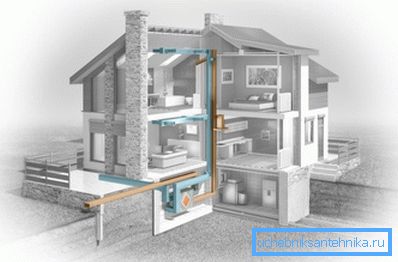
About the classification of ventilation systems
All types of ventilation systems can be divided into 2 large groups, in this case the main criterion for classification is the factor causing the movement of air masses:
- with natural circulation, the air in this case moves due to the pressure difference between the inlet and outlet of the exhaust ventilation channel. In addition to the air ducts and fittings themselves, nothing else is used;
- mechanical ventilation systems - fans are installed in the channels, which create the necessary traction.
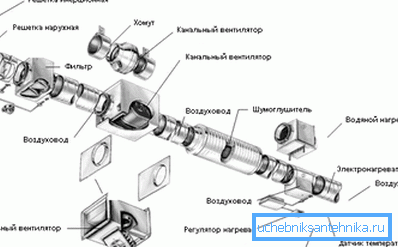
Note! The ventilation system with forced air circulation in some cases is a necessary measure. The fact is that the pressure drop may be too small for the organization of natural ventilation.
If a little more carefully examine the principle of operation of ventilation systems, then they can be divided according to the principle of operation:
- forced ventilation - provides only the flow of fresh air into the room;
- exhaust - the opposite function, polluted air is removed.
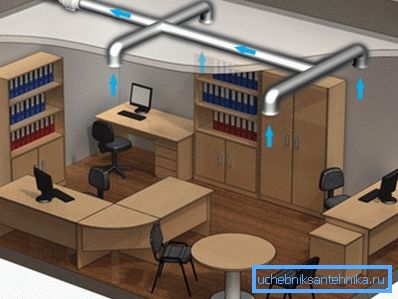
Note! As a rule, these types of systems are used together, such ventilation is called forced-air and exhaust ventilation.
You can concentrate on how exactly the air exchange process is organized.
In this case, the purpose and classification of ventilation systems will look like this:
- emergency ventilation system - it is rather the lot of industrial enterprises where a leak (or a planned release, for example, when using gas fire extinguishers) of a large number of gaseous substance is possible. In this case, the main task of ventilation is to quickly withdraw the incoming volume of gas;
- anti-smoke - is included in the work at full capacity only in the case when the building began to spread fire. Due to the fact that part of the smoke is removed and fresh air enters, people get a few extra minutes to evacuate;
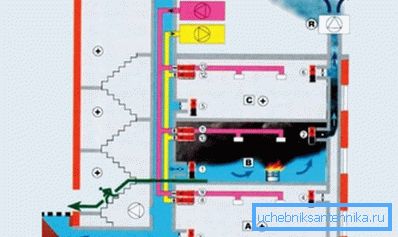
- general exchange - the same microclimate is created throughout the room, that is, it takes into account not only the composition of the air, but also humidity, temperature, etc .;
- local - maybe both inflow and exhaust. Supply local ventilation is most common in production (airflow in the workplace), but local exhaust ventilation may well be installed with your own hands, for example, in the kitchen.
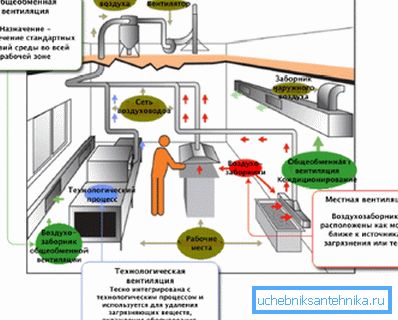
The principle of operation of various ventilation systems
Despite the fact that any ventilation system solves, by and large, the same task, the principle of the organization of air exchange may differ significantly depending on the purpose of the building. For example, in residential buildings, classical forced-air ventilation is most often used, while in the industry the vast majority of ventilation systems are mechanically driven.
In any case, in order to make the right choice, you need to know, at least in general terms, the principle of ventilation.
Residential Ventilation
Classic can be considered as a supply and exhaust system with natural circulation.
In this case, the process of air exchange occurs according to the following scheme:
- exhaust ventilation channel is installed in each room, which removes polluted air;
Note! To ensure normal air circulation, you can simply leave a small gap between the door and the floor. In this case, the number of ventilation channels can be reduced
- in order that the thrust is not violated, it is necessary to ensure the flow of fresh air. The supply air duct may be too expensive, but the price of a conventional supply valve is small, and the efficiency of such a device is quite enough for ventilation.
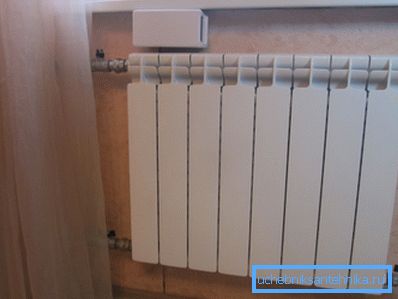
As for multi-storey buildings, the ventilation systems in them work according to a similar principle, the design is slightly different:
- A vent hole is laid out of special blocks, in each block there is 1 large hole (in it polluted air from different apartments is mixed) and 2 smaller holes - through them the air is diverted from apartments;
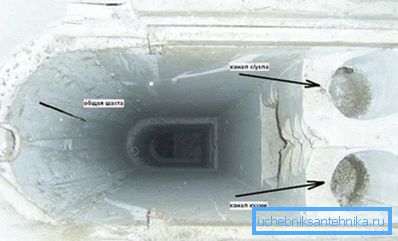
- the distribution of ventilation channels around the apartment is done with the help of plastic ducts or galvanized. The installation instructions for such ventilation systems are reduced to simply connecting the individual duct sections to install them on the walls or on the ceiling and mask them with a partition.
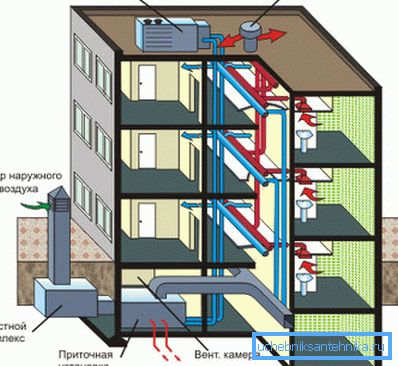
Ventilation system at the enterprise
Ventilation systems and their classification in industrial premises differ in particular diversity, because the specificity of a specific production has to be taken into account.
Industrial analogs differ from conventional ventilation systems:
- using exclusively metal ducts (galvanized, aluminum);
- the use of duct fans, ventilation of industrial premises should not depend on weather conditions, therefore duct fans are an integral part of industrial ventilation;
- as a rule, ventilation systems in production are not limited to simple ventilation, they include sensors that monitor changes in the composition of the air;
- In addition, depending on the production, additional measures may be taken to increase the anti-explosion protection or protection against dust. For example, the ventilation system in an electronics company should pay special attention to protection against dust and maintaining the microclimate in industrial premises.
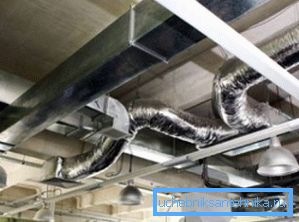
Intelligent Ventilation
Simple types of ventilation systems have a significant drawback - they are difficult to regulate air exchange. From here and such discrepancy of the Russian and foreign norms. If in the Russian Federation the air exchange rate for an average apartment is about 120-150 m3/ hour, then in Germany about half.
This discrepancy can be eliminated if the peak drawing rate is considered as the peak, and the inflow is considered the base value. But in conditions of unregulated ventilation is impossible.
Ideally, an autonomous ventilation system should be able to adapt to the person and have the following capabilities:
- be able to dynamically adjust the air;
- maximum use of heat from the exhaust air (that is, the system includes a heat exchanger - heat recuperator);
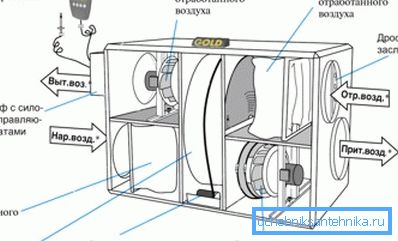
- control not only the volume of exhaust and inflow, but also humidity, air temperature. Not superfluous will be the gas analyzer, which will allow to identify harmful impurities in the air.
Summarizing
Without the intake of fresh air, the human, and any other organism simply cannot function normally. Ventilation systems in offices, residential buildings, industrial premises solve the same problem - they remove contaminated water and supply fresh air. Despite this, it may not be so easy to choose the appropriate type of ventilation; the material proposed in the article will help determine the choice.
The video in this article is more informational and describes the advantages of different types of ventilation systems.